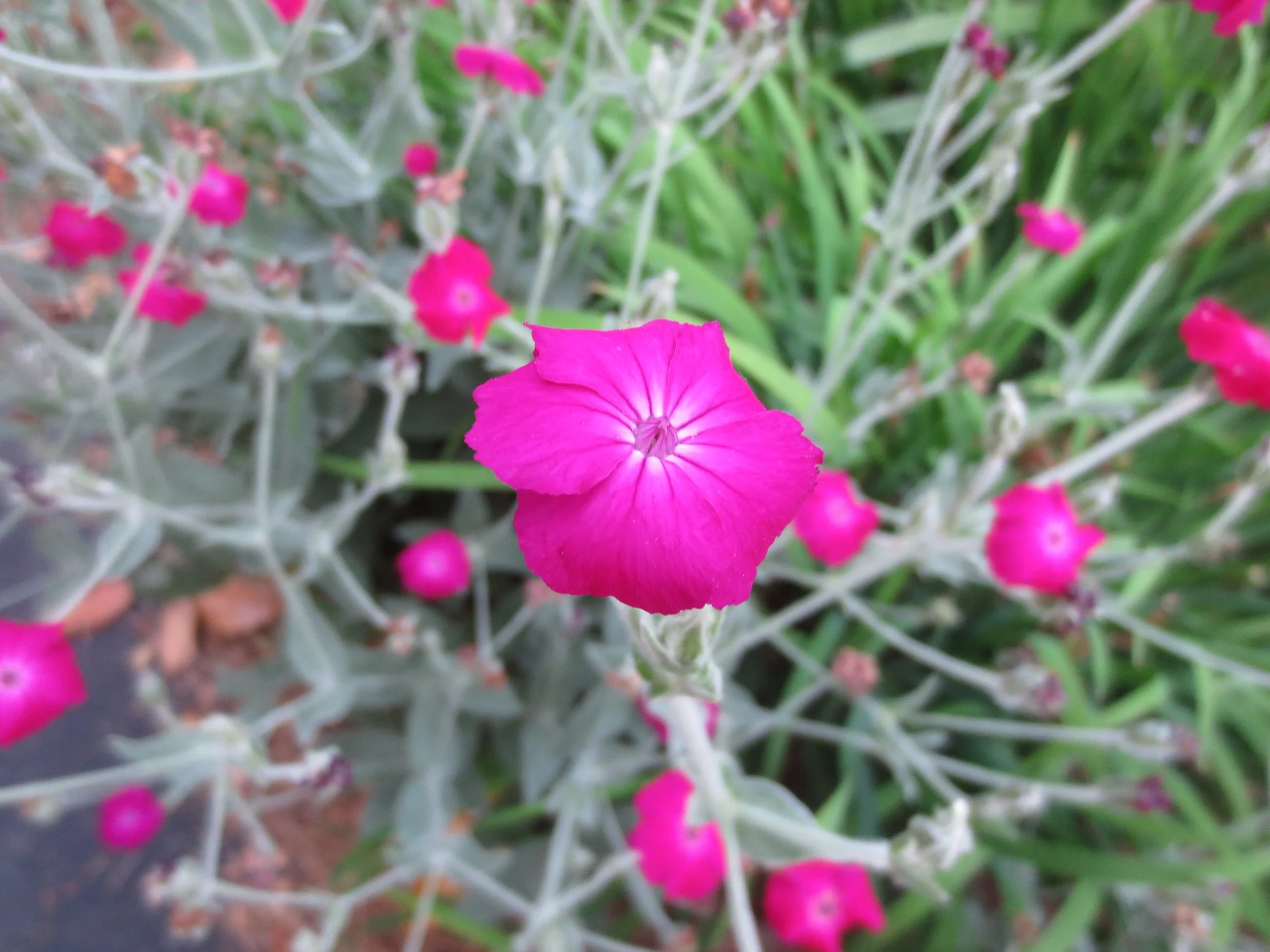Gardeners everywhere are removing weeds from their gardens, hoping to control the nasties before they become deep-rooted and tougher, or at least before they set seeds and spread. One weed that I find particularly challenging is Sticky Weed, Galium aparine, pronounced GAL-ee-um ap-AR-in-nee. Other common names for this pest are Sticky Willy, Catchweed Bedstraw, Cleavers, and Velcro Plant.
The common names relating to its stickiness arise from the curved prickles along the length of the four-sided stems. These prickles grab skin, clothing, and other parts of the plant, making it difficult to discard once pulled, almost like a piece of static-filled plastic wrap refusing to be released from one’s hand. Those same prickles prevent the weed from flattening after harvest so it was once used to stuff mattresses, hence the reference to bedstraw.
The stems can grow up to six feet in length but they are so weak that the plant appears as a vine or groundcover. When an attempt is made to pull the plant from our garden beds, it frequently breaks off at ground level, leaving roots to regenerate a replacement plant. Plants are annuals, so removing them before seeds develop will help reduce recurrence. Seeds remain viable a couple of years, even after passing through the digestive tracts of animals. It is possible to spread the weed through use of animal manures if it was present in pastures.
Sticky Weed has a unique appearance because its leaves are whorled around the stems, with long lengths of stem (“internodes”) between the leaf clusters.
Native Sticky Weed grows across most of the US, in all sun exposures except deepest shade. It is not selective as to soil texture. My research on this plant revealed that the white, four-petaled flowers were once used to curdle milk for cheese making (why?) while the seeds can be harvested and roasted as a low-caffeine alternative to coffee (again, why?). The fruits are bristly, allowing them to travel along on pet fur or the gardener’s socks. An individual plant can produce up to 400 seeds. Sticky Weed’s leaves and stems can be eaten raw or cooked. File that away under “things I hope I never need to know.”
Sticky Weed, Galium aparine
The magnified seeds of Sticky Weed, Galium aparine


